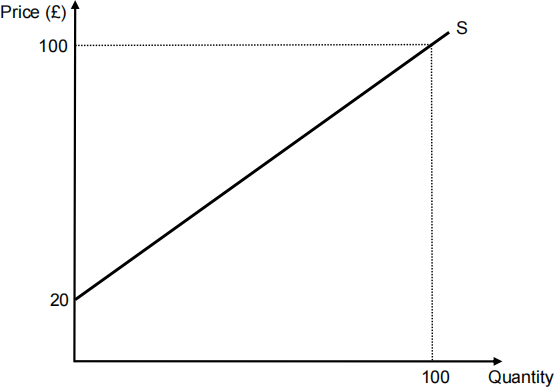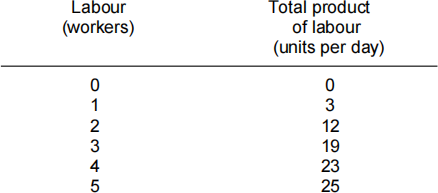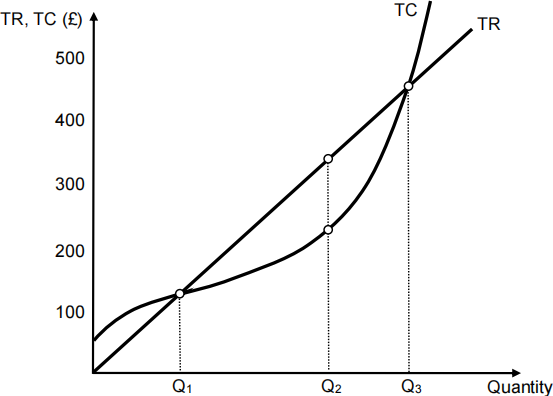关键词 > MGT6128
MGT6128 MANAGERIAL ECONOMICS Spring Semester 2023-2024
发布时间:2024-05-18
Hello, dear friend, you can consult us at any time if you have any questions, add WeChat: daixieit
MGT6128
MANAGERIAL ECONOMICS
Spring Semester 2023-2024
1. In a mixed economy:
(a) resource allocation is influenced by both the government and the market
(b) resource allocation is the result of the ‘invisible hand’ alone
(c) resource allocation is undertaken by government only
(d) resource allocation is determined by the private sector only
(e) resource allocation is always optimal
2. An economy produces two goods X and Y. Its production possibility frontier (PPF) is linear, with intercepts on the X and Y axes of 100 and 200 respectively. Based on this information, the opportunity cost of producing one additional unit of X is unit(s) of Y.
(a) 100
(b) 2
(c) 1
(d) 0.5
(e) 0.01
3. For the same economy as in question 2, what percentage increase in the total resources available would be needed for it to become possible to simultaneously produce 100 units of good X and 200 units of good Y?
(a) 1000%
(b) 200%
(c) 100%
(d) 50%
(e) Not possible to say based on the information provided
4. When a market is in equilibrium:
(a) quantity demanded equals quantity supplied
(b) excess demand is zero
(c) excess supply is zero
(d) the market is cleared at the prevailing price
(e) all of the above
5. The diagram below shows the demand curve (D) and the supply curve (S) for economics textbooks:

If the government introduces a price ceiling at P1 , all else being equal, there will be:
(a) excess demand and prices will rise
(b) equilibrium at P0 and prices will rise
(c) equilibrium at P0 and prices will not change
(d) excess supply and prices will fall
(e) excess supply but prices cannot fall
6. The demand and supply curves for beef are given by D and S respectively in the diagram below:

If the initial equilibrium is at point E, where would you expect the new equilibrium to be in light of evidence showing that meat causes environmental damage?
|
(a) |
Point H |
|
(b) |
Point F |
|
(c) |
Point J |
|
(d) |
Point L |
|
(e) |
None of the above |
7. Using the same diagram as for question 6, and again starting from point E, where will the new equilibrium be if some farmers switch to growing crops used in plant-based meat substitutes at the same time as a new technique is developed that allows those substitutes to taste and have exactly the same texture as meat?
|
(a) |
Point G |
|
(b) |
Point K |
|
(c) |
Point M |
|
(d) |
Point I |
|
(e) |
None of the above |
8. The income elasticity of demand for a perfume, Reek Ovit , is estimated to be 2.5. What change in the quantity demanded of Reek Ovit would be forecast by the company’s economists if incomes are predicted to rise by 7% next year?
(a) 2.5%
(b) 4.5%
(c) 9.5%
(d) 17.5%
(e) Not possible to say based on the information provided
9. If, other things being equal, a 10% price increase for good A results in the quantity demanded of good B rising by 5%, then good B is:
|
(a) |
a complementary good |
|
(b) |
an unfair good |
|
(c) |
a superior good |
|
(d) |
an inferior good |
|
(e) |
a substitute good |
10. The following table shows price and income elasticities for various types of food in the UK:

Based on these elasticities, which food(s) would be classified as both (own) price elastic and luxury?
|
(a) |
Beef |
|
(b) |
Lamb |
|
(c) |
Pork |
|
(d) |
Beef and lamb |
|
(e) |
Lamb and pork |
11. Looking at the same data as for question 10, which foods are normal goods?
(a) Beef
(b) Lamb
(c) Root vegetables
(d) Bananas
(e) All of (a), (b), (c) and (d) above
12. The diagram below shows the supply curve (S) for a good.

What will be this good’s price elasticity of supply (PES) when quantity supplied equals 100?
(a) 0.2
(b) 0.8
(c) 1
(d) 1.25
(e) 5
13. The table below shows the total utility a person gets from consuming different quantities of a good.

How many units of the good should the person choose to consume if the price of the good is £13?
(a) 2
(b) 3
(c) 4
(d) 5
(e) Cannot say given the information above
14. A firm uses 100 units of labour and 100 units of capital to produce 1000 units of output. What output levels would be consistent with initially increasing returns to scale followed by decreasing returns to scale if the quantities of both inputs are first increased to 200, and then to 400?
|
(a) |
1500; 3800 |
|
(b) |
2000; 4000 |
|
(c) |
2200; 4300 |
|
(d) |
2200; 4400 |
|
(e) |
2200; 4500 |
15. Consider the following firm’s labour input and total product:

Using the data in the above table, if the firm employs 3 workers, total product (in units per day) and average and marginal product of labour (measured in units per worker) are:
(a) 19; 6.33; and 9 respectively
(b) 19; 3; and 9 respectively
(c) 19; 6.33; and 7 respectively
(d) 34; 19; and 6.33 respectively
(e) 34; 19; and 7 respectively
16. In the figure below, TR and TC denote total revenue and total cost respectively.

By increasing its output from Q2 to Q3 , the firm will:
(a) decrease its profit
(b) increase its profit
(c) increase its marginal revenue
(d) reduce its marginal revenue
(e) reduce its average (total) costs
17. A perfectly competitive firm has average (total) costs of £20 and average variable costs of £15, while price is £18. In this situation the firm is:
(a) making a loss and should shut down in the short run
(b) making a profit
(c) making a loss but should continue to produce in the short run
(d) making a loss and is making a negative contribution to fixed costs
(e) being run inefficiently
18. The level of output at which a firm’s long run average costs first achieve their lowest level is called:
|
(a) |
Minimum Effective Scale |
|
(b) |
Maximum Effective Scale |
|
(c) |
Minimum External Scale |
|
(d) |
Maximum External Scale |
|
(e) |
Minimum Efficient Scale |
19. Which of the following statements about a monopolist with a linear demand function is true:
(a) Average and marginal revenue are always the same
(b) Marginal revenue is greater than price
(c) Total revenue will be maximised when price elasticity of demand equals – 1
(d) Marginal revenue increases as output increases
(e) Marginal revenue can never be negative
20. An unregulated, single price, profit-maximising monopoly is shown in the diagram below, where D indicates demand, MR is marginal revenue and MC is marginal cost.

If fixed cost is £20, the monopoly’s total economic profit will be:
|
(a) |
£0 |
|
(b) |
£50 |
|
(c) |
Negative |
|
(d) |
£25 |
|
(e) |
£45 |

